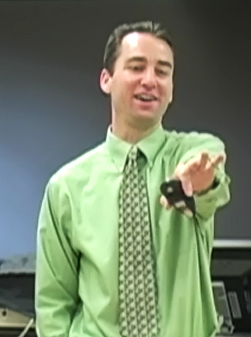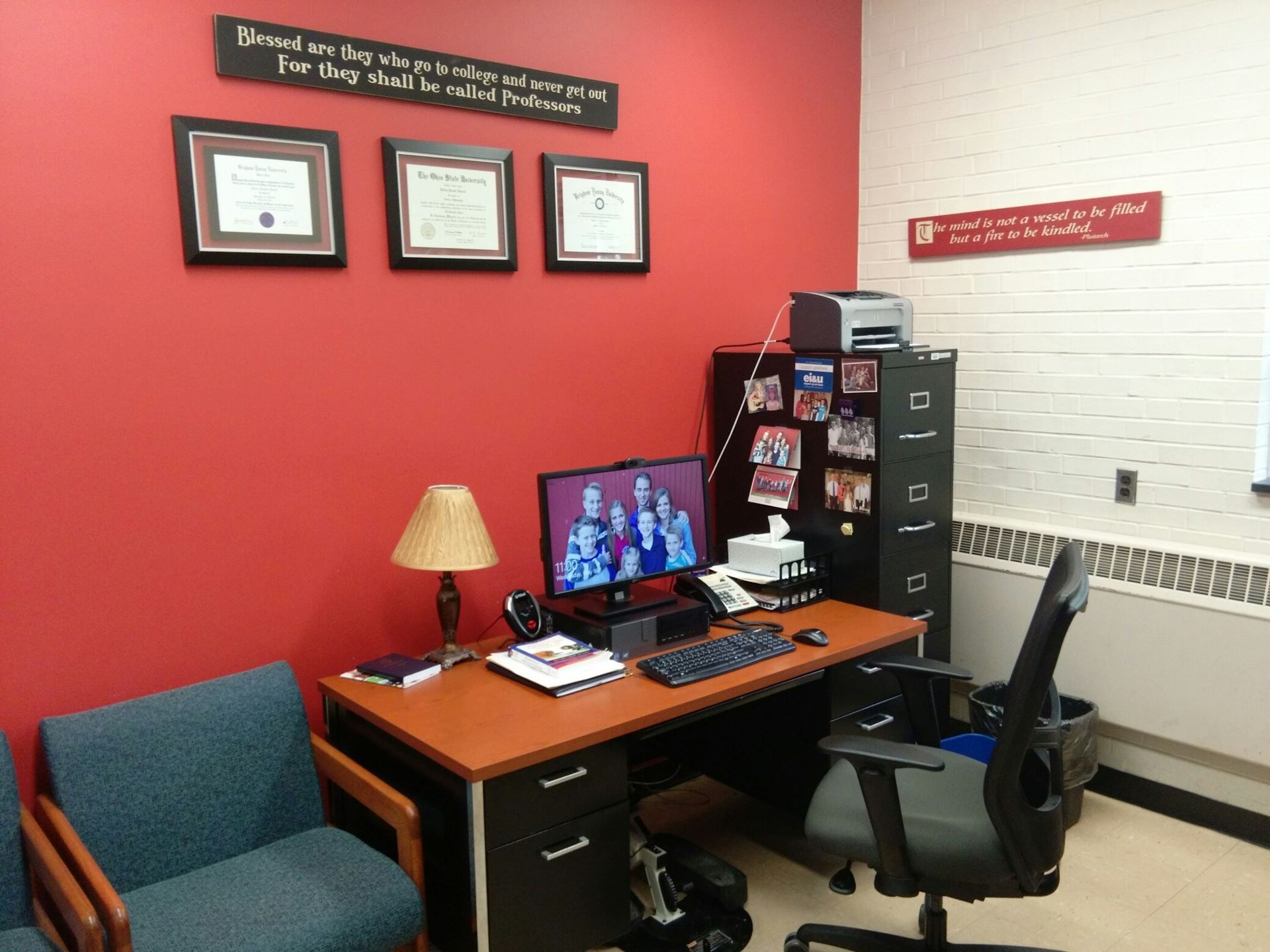 School name: Eastern Illinois University
School name: Eastern Illinois University
Type of school: Regional public 4-year institution
School locale: Charleston, IL (Rural Illinois with lots of corn and soybeans!)
Classes you teach:
Most commonly I teach biological psychology, sensation & perception, and psychology of learning.
Average class size: 40-50 students
What’s the best advice about teaching you’ve ever received?
I’m not sure where I first heard it and it’s not on the forefront of my consciousness when teaching, but in practice I think I’ve followed the advice that “People don’t care how much you know until they know how much you care.”
What book or article has shaped your work as a psychology teacher?
I don’t think there is any one book or article. Rather, I’ve learned so much from STP colleagues, teaching conferences, books and articles on teaching techniques, and conducting my own classroom research. Together, these simple means have had a large cumulative effect on my teaching and my students.
 Briefly tell us about your favorite lecture topic or course to teach.
Briefly tell us about your favorite lecture topic or course to teach.
I love teaching hard things that students are capable of learning (action potentials, neural convergence, sensory transduction, positive vs. negative reinforcement and punishment). I love teaching students about their everyday experiences (color vision, thirst, emotion, sound localization, sleep). I also love teaching students about male and female prenatal sexual development (it’s astounding).
Briefly describe a favorite assignment or in-class activity.
My all-time favorite activity is the Play-Doh brain. I assign different parts of the brain to small groups of students who try to come up with a creative way to remember the name of the brain structure and its associated function (e.g., “hippocampus” sounds like a hippo on campus, which would be learning and remembering just like the hippocampus does). Students are also asked to mold a 3-D Play-Doh representation of their assigned brain structure. As each group shares with the rest of the class the name of the brain structure and its function, I add their Play-Doh brain structure to the developing brain. By the end, we have a wonderfully colorful brain, which I then have a student cut in half (midsagittal section) and hold up for the class to see. This can serve as a springboard for teaching about split-brain behavior J. The next class period, I bring a Jell-O brain colored to look like a real brain and quiz students on a few brain parts before I take a bite of it.
What teaching or learning techniques work best for you?
I frequently use in-class polling questions and peer discussion of answers. More recently, I’ve been using online cumulative quizzes over each chapter for all of my courses. Students are saying they are learning more and are less stressed!
 What’s your workspace like?
What’s your workspace like?
My office is 9x12 (I counted the squares on the floor), with one file cabinet, three large bookshelves, an office desk and chair, and three other chairs. My walls are decorated with family photos, three framed diplomas, and a few quotes “Blessed are they who go to college and never get out, for they shall be called professors” and “The mind is not a vessel to be filled, but a fire to be kindled.” In February of 2016, I bought an under-desk elliptical to get more activity at my desk (over 5,000 virtual miles so far).
Three words that best describe your teaching style.
Enthusiastic, encouraging, engaging
Tell us about a teaching disaster (or embarrassment) you’ve had and how you dealt with the situation.
I had a student pass out after watching the re-enactment video of Phineas Gage’s accident. Fortunately, the student recovered quickly, but I don’t show it anymore in class.
What is something your students would be surprised to learn about you?
I was on a Latin ballroom dance team in college.
What are you currently reading for pleasure?
I don’t have much time for leisurely reading, but the last book I read was a powerful story by Chris Williams “Let It Go: A True Story of Tragedy and Forgiveness.”
What tech tool could you not live without?
Classroom polling software
